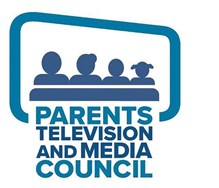Hannah Harrison
AFA Journal staff writer
September 2021 – “Why should we believe that children are unaffected by entertainment?” asks Melissa Henson.
For 26 years, Parents Television and Media Council (PTC) has faithfully fought to protect children from graphic exposure in entertainment media. In that time, however, PTC has seen cable networks replaced by online streaming services. A 2021 study conducted by The Trade Desk reported, “Streaming consumption accounts for 68% of TV viewing versus 28% for traditional TV viewing.”
While streaming platforms are cost-effective and easily accessible, certain content is filled with vulgarities, violence, graphic sex, and more. Henson, PTC program director, sat down with AFAJ to discuss how to make video streaming safer for children and teens.
AFA Journal: Why is what we let our kids stream so important?
Melissa Henson: We know that what kids see influences behavior, and there are decades of research to support this. Kids exposed to more violent content tend to become more violent. Kids exposed to more sexual content become sexually active at a younger age and have more sexual partners over their lifetime. The advertising industry is premised on the idea that seeing an ad can influence consumer behavior.
AFAJ: What are the dangers of streaming for children and teens?
MH: The streaming landscape is especially perilous for children and teens. Some streamers lump teen-targeted content with adult content; some lump teen-targeted content with children’s content. There is a lot of teen-targeted content (like 13 Reasons Why, Big Mouth, Euphoria, A Teacher, Pen15) that is violent, sexually graphic, and contains dangerous messages seeming to endorse sexting, adult-child sexual relationships, suicide, drug use, etc.
AFAJ: Why are content ratings and descriptions so important?
MH: There is so much content being produced, it is impossible for any parent to stay on top of and to know which programs might be problematic for their family. The only help parents have is consistent, reliable, accurate, and transparent ratings and content descriptions. This is an issue we’ve been engaged in for more than 20 years. As they are currently being used, ratings can sometimes hide more than they reveal, especially concerning potentially problematic content.
AFAJ: What are some tips for parents when it comes to choosing streaming sites and the content they let their children watch?
MH: Learn as much as you can about the parent company that owns the streaming service. Research [to identify] film studios, TV studios, broadcast networks, or cable channels that are also owned by that parent company. That will give you a good idea of the content they will make available on their streaming platform.
Many streaming services offer a week or 14 days for free before they start billing. Use that time to check out the parental controls and to scan their offerings for potentially problematic content.
Limit the number of devices that can stream content and keep those in public rooms of the house and out of the bedrooms. 
 Checkpoints to protect kids
Checkpoints to protect kids
PTC’s Melissa Henson offers these parental guidelines to protect children:
• Limit the number of internet-connected devices in the home and make sure all available filters/parental controls are being used at the device level.
• Use networkwide filters. Explore options such as Circle, Covenant Eyes, Clean Browsing, or Kids Guard.
• Use available parental controls on the streaming services you subscribe to.
• Do not install streaming apps on mobile devices used by your kids, and keep internet-connected devices out of bedrooms.
• Watch as a family whenever possible.
For more information and resources, visit parentstv.org or call 800.882.6868.